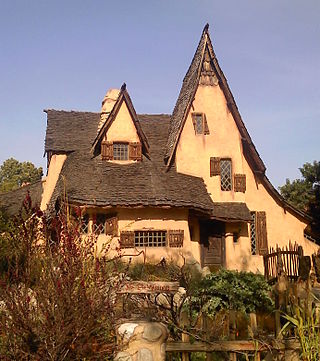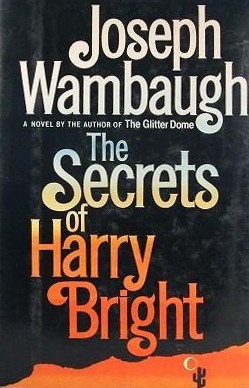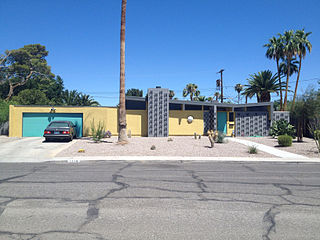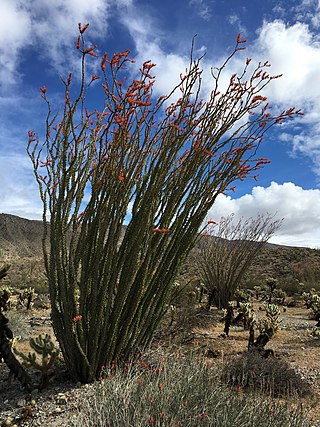
Richard Joseph Neutra was an Austrian-American architect. Living and building for most of his career in Southern California, he came to be considered a prominent and important modernist architect. His most notable works include the Kaufmann Desert House, in Palm Springs, California.

Joseph Aloysius Wambaugh Jr. is an American writer known for his fictional and nonfictional accounts of police work in the United States. Many of his novels are set in Los Angeles and its surroundings and feature Los Angeles police officers as protagonists. He won three Edgar Awards, and was named a Grand Master by the Mystery Writers of America.

Wonga Philip Harris was an American actor, bandleader, entertainer and singer. He was an orchestra leader and a pioneer in radio situation comedy, first with The Jack Benny Program, then in The Phil Harris-Alice Faye Show in which he co-starred with his wife, singer-actress Alice Faye, for eight years. Harris is also noted for his voice acting in animated films. As a voice actor, he played Baloo in The Jungle Book (1967), Thomas O'Malley in The Aristocats (1970), Little John in Robin Hood (1973), and Patou in Rock-a-Doodle (1991). As a singer, he recorded a number one novelty hit record, "The Thing" (1950).

Frank Lloyd Wright Jr., commonly known as Lloyd Wright, was an American architect, active primarily in Los Angeles and Southern California. He was a landscape architect for various Los Angeles projects (1922–1924), provided the shells for the Hollywood Bowl (1926–1928), and produced the Swedenborg Memorial Chapel at Rancho Palos Verdes, California (1946–1971). His name is frequently confused with that of his more famous father, Frank Lloyd Wright.

Thomas Long "Pegleg" Smith was a mountain man who, serving as a guide for many early expeditions into the American Southwest, helped explore parts of present-day New Mexico. He is also known as a fur trapper, prospector, and horse thief. Peg Leg Smith Monument, is a historical site in Anza-Borrego Desert State Park, California. Peg Leg Smith Monument site is a California Historical Landmark No. 452, listed on October 11 ,1960.

Alexander Construction Company was a Palm Springs, California, residential development company that built over 2,200 houses in the Coachella Valley of Riverside County, California, between 1955 and 1965.

Desert Center is a census designated place in the Colorado Desert in Riverside County, California. It is in southern California, between the cities of Indio and Blythe at the junction of Interstate 10 and State Route 177, about halfway between Phoenix and Los Angeles. The ZIP Code is 92239, and the community is in telephone area codes 442 and 760. The elevation is 656 feet (200 m). The population was 204 at the 2010 census.

Storybook architecture or fairytale architecture is a style popularized in the 1920s in England and the United States. Houses built in this style may be referred to as storybook houses.

Edmund Carroll Jaeger, D.Sc., was an American biologist known for his works on desert ecology. He was born in Loup City, Nebraska to Katherine and John Philip Jaeger, and moved to Riverside, California in 1906 with his family. He was the first to document, in The Condor, a state of extended torpor, approaching hibernation, in a bird, the common poorwill. He also described this in the National Geographic Magazine.

Palm Springs is a desert resort city in Riverside County, California, United States, within the Colorado Desert's Coachella Valley. The city covers approximately 94 square miles (240 km2), making it the largest city in Riverside County by land area. With multiple plots in checkerboard pattern, more than 10% of the city is part of the Agua Caliente Band of Cahuilla Indians reservation land and is the administrative capital of the most populated reservation in California.

The San Gorgonio Pass wind farm is a wind farm that stretches from the eastern slope of the San Gorgonio Pass, near Cabazon, to North Palm Springs, on the western end of the Coachella Valley, in Riverside County, California. Flanked by Mount San Gorgonio and the Transverse Ranges to the North, and Mount San Jacinto and the Peninsular Ranges to the South, the San Gorgonio Pass is a transitional zone from a Mediterranean climate west of the pass, to a Desert climate east of the pass. This makes the pass area one of the most consistently windy places in the United States.

The Desert Rat Scrap Book was a roughly quarterly southwestern humor publication based in Thousand Palms, California. DRSB was published in editions of 10,000 to 20,000 copies, whenever its creator, Harry Oliver had sufficient material and enough money to pay the printer. Forty-six issues were printed and distributed via Southern California bookstores and newsstands, and by mail worldwide. DRSB was devoted to lore, legends, lies and laughs of the American Southwest region, especially featuring prospectors and other desert rats. The publication was launched in late 1945 and ran through early 1967.
The Calico Print was a newspaper, established in 1882 and published during the heyday of the silver mining camp of Calico, California prior to 1902. The Calico Print was also the name of a monthly, later bi-monthly, periodical of the mid-20th century, and contained "Tales and trails of the desert West."

The Secrets of Harry Bright is the seventh novel written by former Los Angeles Police Department detective Joseph Wambaugh. Published in 1985, the book continues a pattern of Wambaugh crime fiction beginning with The Choirboys that uses black humor to explore the psychological effects of prolonged stress on veteran police officers. As with all his novels, The Secrets of Harry Bright, set in November 1984, is contemporaneous with the time frame in which it was written and includes numerous allusions and references to events and personalities of the time.

Cabot's Pueblo Museum is an American historic house museum located in Desert Hot Springs, California, and built by Cabot Yerxa, an early pioneer of the Colorado Desert. A large, Hopi-style pueblo, built in the Pueblo Revival Style, it contains artworks, artifacts of American Indian and Alaska Native cultures, and memorabilia of early desert homesteader life. The museum may also be referred to as Cabot's Old Indian Pueblo Museum, Cabot's Trading Post or Yerxa's Discovery.
Donald Allen Wexler was an influential Mid-Century modern architect whose work is predominantly in the Palm Springs, California, area. He is known for having pioneered the use of steel in residential design.

Carl Eytel was a German American artist who built his reputation for paintings and drawings of desert subjects in the American Southwest. Immigrating to the United States in 1885, he settled in Palm Springs, California in 1903. With an extensive knowledge of the Sonoran Desert, Eytel traveled with the author George Wharton James as he wrote the successful Wonders of the Colorado Desert, and contributed over 300 drawings to the 1908 work. While he enjoyed success as an artist, he lived as an ascetic and would die in poverty. Eytel's most important work, Desert Near Palm Springs, hangs in the History Room of the California State Library.

William Krisel was an American architect best known for his pioneering designs of mid-century residential and commercial architecture. Most of his designs are for affordable homes, especially tract housing, with a modern aesthetic.

Clinton Gilbert Abbott was an American ornithologist, naturalist, and Director of the San Diego Natural History Museum from 1922 to 1946. Abbott supervised the construction of the museum's current building in Balboa Park, expanded research field trips and expeditions, and participated in important conservation efforts in southern California and the Baja California region. He was instrumental in the preservation of the southern California desert area that became Anza-Borrego Desert State Park.

Yaqui Well is a historic spring located in Anza-Borrego Desert State Park in southeastern San Diego County, California in the United States about 21.4 mi (34.4 km) east of Warner Springs. The watering hole can be reached by a popular 1.64 mi (2.64 km) one-hour hiking trail starting at Tamarisk Grove Campground. The trail was described in the New York Times as a "flat, gentle hike—the kind that wraps around small, sloping hills, abuts a shallow canyon, and rewards its guests with an otherworldly view of the desert at the finale."




















